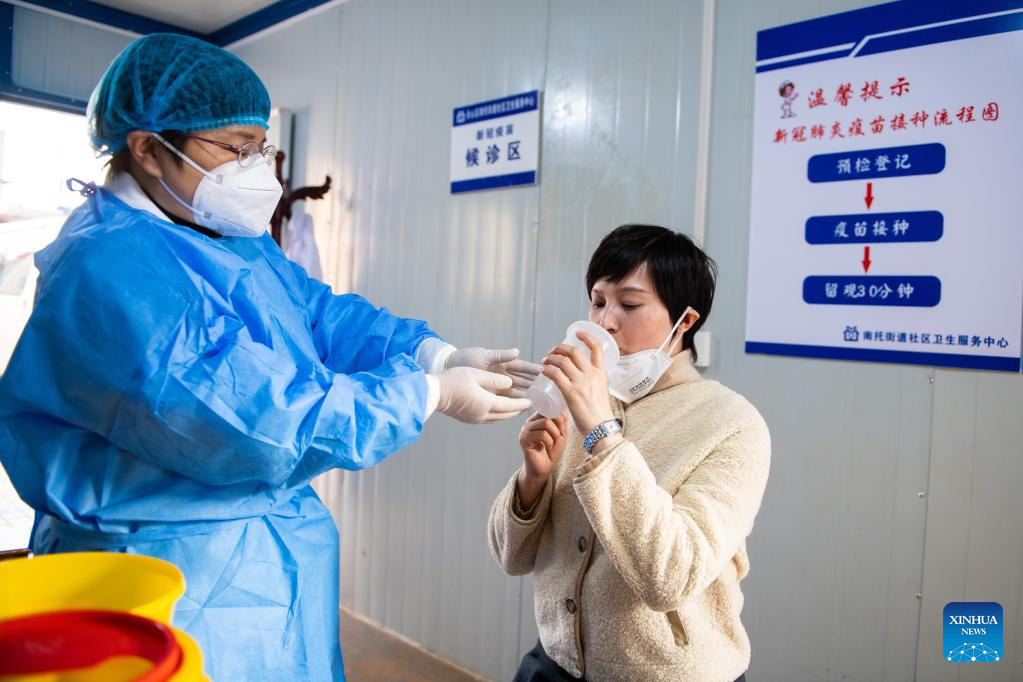Timely change of tack in virus fight
Lifting the strict virus controls by no means indicates the government has surrendered to the virus. Instead, the optimization of the prevention and control measures are in line with the current epidemic situation.
On the one hand, the variants of the novel coronavirus responsible for the current wave of infections are less lethal for most of the population; on the other hand, the economy is in a dire need of a quick reboot and the society of its overdue mobility.
However, that is not to ignore the seriousness of the situation. Doing everything possible to reduce the COVID death rate is the pressing need of the new stage of the fight with the novel coronavirus.
 ▲ A resident (R) receives a dose of inhalable COVID-19 vaccine at a community health service center in Tianxin district of Changsha, Central China’s Hunan province, Dec 22, 2022. Photo/Xinhua
▲ A resident (R) receives a dose of inhalable COVID-19 vaccine at a community health service center in Tianxin district of Changsha, Central China’s Hunan province, Dec 22, 2022. Photo/Xinhua
Although most people can recover from being infected with a few days of rest, the virus still poses a grave threat to the life and health of the elderly, especially those with underlying health conditions.
Although 75 percent of the 240 million people aged 60 and above in the country, and 40 percent of those aged 80 and above, have had three vaccination shots, higher than that of some developed economies, it should not be forgotten that around 25 million people aged 60 and above have not been vaccinated at all, putting them at greater risk of severe illness.
The strain that hospitals are under nationwide is evidence of the surging demand for medical care. It is imperative that governments at various levels step into the breach. More inputs are needed to increase the emergency medical care resources in a short time and ensure the supply of anti-fever and anti-inflammatory medicines.
That means establishing more fever clinics, optimizing treatment procedures, increasing the numbers of support staff for medical workers, and improving service efficiency. It is good to see some cities are already acting quickly in that direction. For instance, the number of fever clinics in Beijing has increased rapidly from 94 to 1,263, over the past weeks, preventing a run on medical resources.
Neighborhood management departments and public health institutions should also open green channels to ensure that all calls are promptly answered and critically ill patients are transported to hospitals for treatment.
That the number of emergency calls public health departments have received in many cities peaked late last week suggests that the most difficult time has passed, albeit only for this wave of the virus, with more waves expected. Nevertheless, as the situation improves, grassroots departments and public health institutions are expected to take the initiative to survey and provide for people’s medical care needs, including offering psychological counselling.
As expected, the continued emphasis on putting lives and health first is selectively ignored by those China-bashers who delight in frissons of schadenfreude at the expense of the Chinese people.
FROM:CHINADAILY